Aomori and more
- Sort by
- Popularity
- Name
-
Imari ware/Arita ware Imari yaki Arita yaki
- Ceramic
- Saga

Imari ware and Arita ware are both porcelain produced around the town of Arita, in the Saga prefecture. Imari ware and Arita ware are light and delicate and both have excellent durability because their porcelain is produced from porcelain stone. T…
View more
-
Shigaraki ware Shigaraki yaki
- Ceramic
- Shiga
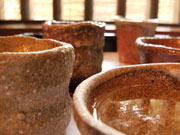
Shigaraki ware (called Shigaraki yaki in Japanese) is a type of pottery made around the town of Shigaraki in Shiga prefecture. Clays such as kibushi, mizuchi, or gairome are kneaded to make a strong clay that can be used to make thick and large p…
View more
-
Tobe ware Tobe yaki
- Ceramic
- Ehime
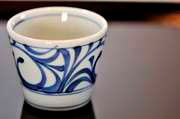
Tobe ware (called Tobe yaki in Japanese) is a form of ceramic ware produced around the town of Tobe in Iyo district of Ehime prefecture. Production began in the middle of the Edo period (1603-1868) and it was registered as a traditional craft by t…
View more
-
Karatsu ware Karatsu yaki
- Ceramic
- Saga
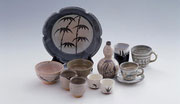
Karatsu ware (called Karatsu yaki) is a form of porcelain produced in the Saga and Nagasaki prefectures. This traditional craft has been produced since the 16th century in various forms, including tea bowls. One of the most notable features of Kar…
View more
-
Tsugaru lacquerware Tsugaru nuri
- Lacquerware
- Aomori

Tsugaru lacquerware (called tsugaru nuri in Japanese) is produced around the city of Hirosaki in Aomori prefecture. Lacquerware has been produced in this region since the middle of the Edo period (1603-1868), but it began to be called Tsugaru lacq…
View more
-
Marugame uchiwa fans Marugame uchiwa
- Other crafts
- Kagawa
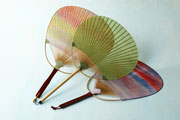
Marugame uchiwa are a type of fan made in the area around the city of Marugame, Kagawa prefecture. It is believed that, in the early Edo period (1603-1868), the first Marugame uchiwa were made as souvenirs for pilgrims to the Konpira Shrine. The o…
View more
-
Kagawa lacquerware Kagawa shikki
- Lacquerware
- Kagawa
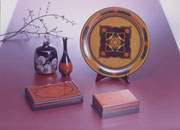
Kagawa lacquerware (called Kagawa shikki in Japanese) is produced in the area around the city of Takamatsu, Kagawa prefecture. There is a wide range of products, such as cake boxes, trays, low tables, and display cases, which are widely popular fo…
View more
-
Omi ramie cloth Omi jofu
- Woven textiles
- Shiga
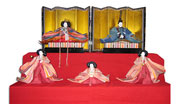
Omi jofu is a textile produced in the region surrounding the town of Koto in Shiga prefecture. It is made with handwoven ramie threads. This craft has chic kasuri* or ikat patterns and a refreshing texture from being woven with fine ramie threads.…
View more
-
Ozu traditional Japanese paper Ozu washi
- Traditional Japanese paper
- Ehime
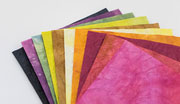
Ozu traditional Japanese paper (called Ozu washi in Japanese) is a handmade paper made in the town of Uchiko, Ehime prefecture. The history of papermaking of Ozu washi dates back to the Heian period (794-1185), and the current style of Ozu washi e…
View more
-
Hikone Buddhist altar Hikone butsudan
- Household Buddhist altars
- Shiga

Hikone Buddhist Altars (called Hikone Butsudan in Japanese) are produced in the city of Hikone, Shiga prefecture. Using luxurious materials in altar bodies which are usually larger than 121.2 cm, this craft is synonymous with high-grade Buddhist a…
View more
-
Nibutani carved wooden tray Nibutani ita
- Wood, bamboo crafts
- Hokkaido
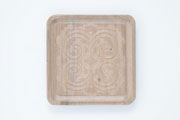
Nibutani Carved Wooden Trays (called Nibutani ita in Japanese) are produced in Biratori, Hokkaido. The origin of the town name, is an Ainu language word for cliff, pirauturu. This craft is known for its patterns like a spiral pattern called moreun…
View more
-
Nibutani bark cloth Nibutani attoushi
- Woven textiles
- Hokkaido

Nibutani Bark Cloth (called Nibutani-attushi in Japanese) is a bark fiber fabric produced in the region surrounding the the town of Biratori, Hokkaido. The term Nibutani originates from niputai which is an Ainu (indigenous people of north Japan) l…
View more
- 1

































































































































































































































































































